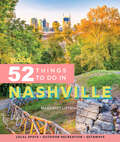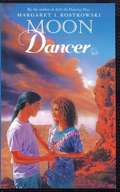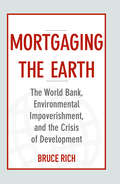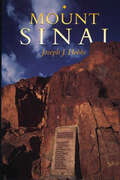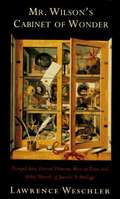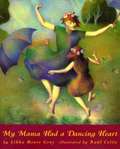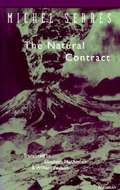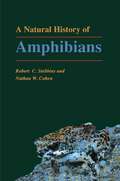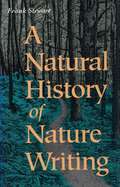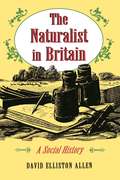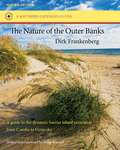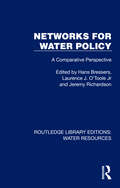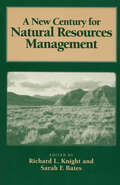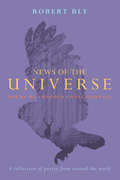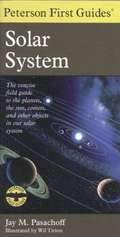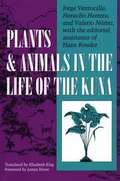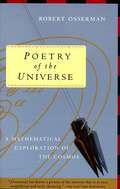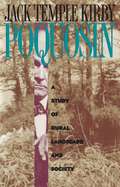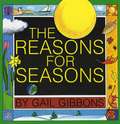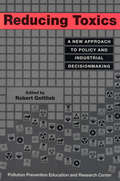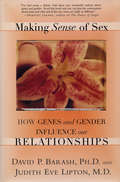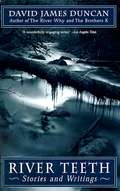- Table View
- List View
Moon 52 Things to Do in Nashville: Local Spots, Outdoor Recreation, Getaways
by Margaret LittmanFrom that venue you haven&’t made it to yet to the weekend in the Smokies you keep meaning to plan, experience something new right here at home with Moon 52 Things to Do in Nashville.Cool things to do in and around the city: Get your hands dirty at a maker studio, discover a new museum, or get to know some of the local artists on Jefferson Street. Take a dance lesson or songwriting class, scope out thrift stores, or get fitted for custom-made cowboy boots. Catch an up-and-comer at Two Old Hippies or go backstage at the Ryman. Take your bike to the Shelby Bottoms Greenway and grab a beer as a post-ride reward. Feast on Kurdish food, test your tastebuds on hot chicken, or taste your way through Southern barbecue historyDay trips and weekend getaways: Sip samples at distilleries along the Tennessee Whiskey Trail, or groove to the blues in Memphis. Go whitewater rafting on the Ocoee, take the car out for cruise along the Natchez Trace Parkway, or go camping in Great Smoky Mountains National ParkExperiences broken down by category: Find ideas for each season, activities with kids, outdoor adventures, historic sites, live music, and moreA local's advice: Whether it&’s a bucket-list venue or an under-the-radar vintage shop, local author Margaret Littman knows the ins and outs of NashvilleInspirational full-color photos throughout Easy-to-scan planning tips: Addresses and time allotment, plus tips for avoiding the crowds if you're heading to a popular attractionWhat are you doing this weekend? Try something new with Moon 52 Things to Do in Nashville. About Moon Travel Guides: Moon was founded in 1973 to empower independent, active, and conscious travel. We prioritize local businesses, outdoor recreation, and traveling strategically and sustainably. Moon Travel Guides are written by local, expert authors with great stories to tell—and they can't wait to share their favorite places with you.For more inspiration, follow @moonguides on social media.
Moon Dancer
by Margaret I. RostkowskiSoon moonlight washed over everything. The houses and rocks around us and the cliff above sprang into detail in the bone white light. I hugged my knees and watched, leaning against Max, and without making a big deal about it, he put his arm around me. Then he stood up and pulled me up, too, then climbed down from the rock, signaling for me to follow. Once on the ground, he put both arms around my waist and waited until I reached up to put my arms on his shoulders. Then we began to dance, there in the moonlight, there with each other. We didn't say another word, just danced, held hands, and finally, slowly, carefully, kissed . . . then kissed again. I felt shot with silver, from the moon, from the dance, from Max.
Mortgaging the Earth
by Bruce RichThe 1992 Rio Earth Summit was supposed to be a turning point for the World Bank. Environmental concerns would now play a major role in its lending--programs and projects would go beyond economic development to "sustainable development. " More than two decades later, efforts to green the bank seem pallid. Bruce Rich argues that the Bank's current institutional problems are extensions of flaws that had been present since its founding. His new book, Foreclosing the Future, tells the story of the Bank from the Rio Earth Summit to today. For readers who want the full history of the Bank's environmental record, Rich's acclaimed 1994 critique, Mortgaging the Earth, is an essential companion. Called a "detailed and thought-provoking look at an important subject" by The New York Times, Mortgaging the Earth analyzes the twenty year period leading up the Rio Summit. Rich offers not only an important history but critical insights about economic development that are ever-more relevant today.
Mount Sinai
by Joseph J. HobbsAmid the high mountains of Egypt's southern Sinai Peninsula stands Jebel Musa, "Mount Moses," revered by most Christians and Muslims as Mount Sinai. (Jewish tradition holds that Mount Sinai should remain terra incognita, unlocated, and does not associate it with this mountain. ) In this fascinating study, Joseph Hobbs draws on geography and archaeology, Biblical and Quranic accounts, and the experiences of people ranging from Christian monks to Bedouin shepherds to casual tourists to explore why this mountain came to be revered as a sacred place and how that very perception now threatens its fragile ecology and its sense of holy solitude. After discussing the physical characteristics of Jebel Musa and the debate that selected it as the most probable Mount Sinai, Hobbs fully describes all Christian and Muslim sacred sites around the mountain. He views Mount Sinai from the perspectives of the centuries-long inhabitants of the region--the monks of the Monastery of St. Katherine and the Jabaliya Bedouins--and of tourists and pilgrims, from medieval Europeans to modern travelers dispirited by Western industrialization. Hobbs concludes his account with the recent international debate over whether to build a cable car on Mount Sinai and with an unflinching description of the negative impact of tourism on the delicate desert environment. His book raises important, troubling questions for everyone concerned about the fate of the earth's wild and sacred places.
Mr. Wilson's Cabinet of Wonder: Pronged Ants, Horned Humans, Mice on Toast, and Other Marvels of Jurassic Technology
by Lawrence WeschlerWriting with great style and humor, Weschler guides the readers through the Museum of Jurassic Technology and through the mind of its curator, David Wilson, a man of unusual imagination who mounts exhibits such as spore-inhaling ants, bats deploying ultraviolet frequencies, peach-pit carvings, and other exhibits that seem the manifest definition of bizarre.
My Mama Had a Dancing Heart
by Libba Moore GrayA ballet dancer recalls how she and her mother would welcome each season with a dance outdoors.
The Natural Contract (Studies in Literature and Science)
by Michel Serres Elizabeth MacArthur William PaulsonGlobal environmental change, argues Michel Serres, has forced us to reconsider our relationship to nature. In this translation of his influential 1990 book Le Contrat Naturel, Serres calls for a natural contract to be negotiated between Earth and its inhabitants. World history is often referred to as the story of human conflict. Those struggles that are seen as our history must now include the uncontrolled violence that humanity perpetrates upon the earth, and the uncontrollable menace to human life posed by the earth in reaction to this violence. Just as a social contract once brought order to human relations, Serres believes that we must now sign a "natural contract" with the earth to bring balance and reciprocity to our relations with the planet that gives us life. Our survival depends on the extent to which humans join together and act globally, on an earth now conceived as an entity. Tracing the ancient beginnings of modernity, Serres examines the origins and possibilities of a natural contract through an extended meditation on the contractual foundations of law and science. By invoking a nonhuman, physical world, Serres asserts, science frees us from the oppressive confines of a purely social existence, but threatens to become a totalitarian order in its own right. The new legislator of the natural contract must bring science and law into balance. Serres ends his meditation by retelling the story of the natural contract as a series of parables. He sees humanity as a spacecraft that with the help of science and technology has cast off from familiar moorings. In place of the ties that modernity and analytic reason have severed, we find a network of relations both stranger and stronger than any we once knew, binding us to one another and to the world. The philosopher's harrowing and joyous task, Serres tells us, is that of comprehending and experiencing the bonds of violence and love that unite us in our spacewalk to the spaceship Mother Earth.
A Natural History of Amphibians
by Robert C. Stebbins Nathan W. CohenThis is a book for all readers who want to learn about amphibians, the animal group that includes frogs, toads, salamanders, and caecilians. It draws on many years of classroom teaching, laboratory experience, and field observation by the authors. Robert Stebbins and Nathan Cohen lead readers on a fascinating odyssey as they explore some of nature's most interesting creatures, interspersing their own observations throughout the book. A Natural History of Amphibians can serve as a textbook for students and independent learners, as an overview of the field for professional scientists and land managers, and as an engaging introduction for general readers. The class Amphibia contains more than 4,500 known living species. New species are being discovered so rapidly that the number may grow to more than 5,000 during our lifetimes. However, their numbers are being rapidly decimated around the globe, largely due to the encroachment of humans on amphibian habitats and from growing human-caused environmental pollution, discussed at length in the final chapter. The authors focus our attention on the "natural history" of amphibians worldwide and emphasize their interactions with their environments over time: where they live; how they reproduce; how they have been affected by evolutionary processes; what factors will determine their destinies over time. Through the experienced eyes of the authors, who are skilled observers, we come to see and understand the place of amphibians in the natural world around us.
A Natural History of Nature Writing
by Frank StewartA Natural History of Nature Writing is a penetrating overview of the origins and development of a uniquely American literature. Essayist and poet Frank Stewart describes in rich and compelling prose the lives and works of the most prominent American nature writers of the19th and 20th centuries, including: *Henry D. Thoreau, the father of American nature writing. *John Burroughs, a schoolteacher and failed businessman who found his calling as a writer and elevated the nature essay to a loved and respected literary form. *John Muir, founder of Sierra Club, who celebrated the wilderness of the Far West as few before him had. *Aldo Leopold, a Forest Service employee and scholar who extended our moral responsibility to include all animals and plants. *Rachel Carson, a scientist who raised the consciousness of the nation by revealing the catastrophic effects of human intervention on the Earth's living systems. *Edward Abbey, an outspoken activist who charted the boundaries of ecological responsibility and pushed these boundaries to political extremes. Stewart highlights the controversies ignited by the powerful and eloquent prose of these and other writers with their expansive - and often strongly political - points of view. Combining a deeply-felt sense of wonder at the beauty surrounding us with a rare ability to capture and explain the meaning of that beauty, nature writers have had a profound effect on American culture and politics. A Natural History of Nature Writing is an insightful examination of an important body of American literature.
The Naturalist in Britain: A Social History
by David Elliston AllenAt once a major resource for historians of science and an excellent introduction to natural history for the general reader, David Allen's The Naturalist in Britain established a precedent for investigating natural history as a social phenomenon. Here the author traces the evolution of natural history from the seventeenth to the early twentieth centuries, from the "herbalizings" of apprentice apothecaries to the establishment of national reserves and international societies to the emergence of natural history as an organized discipline. Along the way he describes the role of scientific ideas, popular fashion, religious motivations, literary influences, the increase of leisure time and disposable income, and the tendency of like-minded persons to form clubs. His comprehensive and entertaining discussion creates a vibrant portrait of a scientific movement inextricably woven into a particular culture.
The Nature of the Outer Banks
by Dirk Frankenberg Betsy BennettNorth Carolina's Outer Banks are in constant motion, responding to weather, waves, and the rising sea level. Beaches erode, sometimes taking homes or sections of highway with them into the surf; sand dunes migrate with the wind; and storms open new inlets and dump sand in channels and sounds. A classic guide, The Nature of the Outer Banks describes these dynamic forces and guides visitors to sites where they can see these phenomena in action. In the first section of the book, Dirk Frankenberg highlights three major processes on the Outer Banks: the rising sea level, movement of sand by wind and water, and stabilization of sand by plant life. In the second section, he provides a mile-by-mile field guide to the northern Banks, and in the final section, he alerts readers to the dangers of overdevelopment on the Outer Banks. In a new foreword for this edition, Betsy Bennett documents the ever-more-critical situation of these shifting sands.Southern Gateways Guide is a registered trademark of the University of North Carolina Press
Networks for Water Policy: A Comparative Perspective (Routledge Library Editions: Water Resources)
by Hans Bressers Laurence J. O’Toole Jr Jeremy RichardsonNetwork models for analysing public policy have become widely used in recent years. This volume, originally published in 1995, assesses the network idea by applying a common perspective on network analysis to the constellations involved in water policy formation and implementation in England and Wales, Germany, Hungary, the Netherlands, the USA and at the level of the EU. Water policy – addressing basic human needs for the supply of adequate surface and groundwater as well as for the maintenance and improvement of water quality, is an increasingly salient subject. Each case covered in this volume treats the issues of water policy network composition and structure, and determinants of network characteristics, as well as documenting the influence of the networks on policy developments towards more network openness, emulation of business behaviour nd less domination by traditional professional groups such as engineers. Essays by the editors provide a common analytical perspective and offer both explicitly-comparative conclusions and evidence-based assessments of the strengths and limitations of the network perspective.
A New Century for Natural Resources Management
by Robert Costanza Sarah F. Bates Vawter Parker Richard L. Knight Steward Pickett Peter BerckThis book explores the changes that are leading to a new century of natural resources management. It places the current situation in historical perspective, analyzes the forces that are propelling change, and describes and examines the specific changes in goals, policy, and practice that are transforming all aspects of natural resources management.The book is an important overview for wildlife biologists, foresters, and others working for public land agencies; professors and students of natural resources; and all those whose livelihood depends on the use of public natural resources.
News of the Universe: Poems of Twofold Consciousness (A\sierra Club Books Publication Ser.)
by Robert BlyAcclaimed poet and translator Robert Bly here assembles a unique cross-cultural anthology that illuminates the idea of a larger-than-human consciousness operating in the universe. The book's 150 poems come from around the world and many eras: from the ecstatic Sufi poet Rumi to contemporary voices like Kenneth Rexroth, Denise Levertov, Charles Simic, and Mary Oliver. Brilliant introductory essays trace our shifting attitudes toward the natural world, from the "old position" of dominating or denigrating nature, to the growing sympathy expressed by the Romantics and American poets like Whitman and Dickinson. Bly's translations of Neruda, Rilke, and others, along with superb examples of non-Western verse such as Eskimo and Zuni songs, complete this important, provocative anthology.
One Cowboy's Roundup: Prairie Poetry & Proverbs
by Ham HamiltonDoggie Diner The big dog was white-eyed and spotted and he showed a wide streak of mean, he wouldn't back off from anything, he was a tough cow man's dream, he would often sit on his haunches, shifting weight between his front feet, anything moving was seen as a meal, and that dog had appetite for red meat, he was owned by a grouchy old rancher, who grubbed a living best as he could, a man married to a big hearted woman, who "made do," as a good woman should, they didn't have much that was fancy, no rug ever covered their floor, dishes were plain, table was sparse; poverty seemed parked at their door, but they never whined about being poor, they shared what little they had. keeping feed for that dog was a chore, he often ate meat that went bad. it wasn't that they had so much meat, but that the dog killed now and then, it was easier to hang up the kill, than to try to keep the dog in a pen. so along comes a stranger one evening as chores were done for the day. and he wants some rest for his mount, and somewhere his body can lay. the woman offers to share supper, too. she warned that it wouldn't be much, he was warmed by the offer of food, and by her hospitality, touched. the dog knew that his feed would shrink and hunger would tug at his guts. he gave a white stare at the stranger that portended of ill from the mutt. .... supper was set to the big pine board, a large bowl and a spoon for each one. two utensils apiece was all that set out, for of anything else, they had none. The stranger tried to be patient, calm, keep frayed nerves under control, but seeing that dog shift on his feet kept his mind from appointed bowl, the dog rotated his stares, and shifts; the discomforted man gave a jerk; grumpy old rancher swore at the dog, which ducked it's head as it shirked, all was quiet at the table for a moment, but saying relaxed would be lies. man and beast were competing for food in country where the hungry one dies, talk picked up as they emptied their bowls and the men and woman conversed, about what was the country's goings-on and what was gettin' better, or worse, but the big dog showed his nervousness and unsettled the stranger some, the dog was now crowding his elbow And the growling got him undone. ...
One hot summer day
by Nina CrewsRelates a child's activities in the heat of a summer day punctuated by a thunderstorm.
Peterson's First Guide to the Solar System
by Jay M. PasachoffA basic field guide for beginning observers of the solar system, introducing information on the locations and characteristics of the planets, sun, comets, meteors, and other objects in our solar system.
Physical Geology: Exploring the Earth (2nd edition)
by Reed Wicander James S. MonroeTextbook on physical geology
Plants and Animals in the Life of the Kuna
by Jorge Ventocilla Heraclio Herrera Valerio Núñez"The earth is the mother of all things"; thus begins this original and accessible book on how the Kuna of Panama relate to the natural world. An integrative project involving Kuna traditional leaders and trained scholars, and fully illustrated by a Kuna artist, this translation of Plantas y animales en la vida del pueblo Kuna focuses on Kuna plant and animal life, social life, and social change as a means of saving traditional ecological knowledge and "returning" it to the community. The authors hope to preserve the Kuna environment not only by reviving traditional technologies but also by educating the Kuna as to what needs protection. While the Kuna have a tradition of living in harmony with the land, the intrusion of the market economy is eroding the very basis of their sustainable way of life. As a response to this crisis, this book seeks to develop native self-awareness and provide a model for collaboration. It will appeal to Latin Americanists, anthropologists, and ethnobotanists, as well as to a general readership in environmental issues.
Poetry of the Universe
by Robert OssermanAn exciting intellectual tour through the ages showing how mathematical concepts and imagination have helped to illuminate the nature of the observable universe, this book is a delightful narrative "math for poets."
Poquosin
by Jack Temple KirbyJack Temple Kirby charts the history of the low country between the James River in Virginia and Albemarle Sound in North Carolina. The Algonquian word for this country, which means 'swamp-on-a-hill,' was transliterated as 'poquosin' by seventeenth-century English settlers. Interweaving social, political, economic, and military history with the story of the landscape, Kirby shows how Native American, African, and European peoples have adapted to and modified this Tidewater area in the nearly four hundred years since the arrival of Europeans. Kirby argues that European settlement created a lasting division of the region into two distinct zones often in conflict with each other: the cosmopolitan coastal area, open to markets, wealth, and power because of its proximity to navigable rivers and sounds, and a more isolated hinterland, whose people and their way of life were gradually--and grudgingly--subjugated by railroads, canals, and war. Kirby's wide-ranging analysis of the evolving interaction between humans and the landscape offers a unique perspective on familiar historical subjects, including slavery, Nat Turner's rebellion, the Civil War, agricultural modernization, and urbanization.
The Reasons for Seasons
by Gail GibbonsHere is an explanation of how the position of Earth in relation to the sun causes seasons, and the wonders that come with each one of them.
Reducing Toxics: A New Approach To Policy And Industrial Decisionmaking
by Robert GottliebIn Reducing Toxics, leading experts address industry, technology, health, and policy issues and explore the potential for pollution prevention at the industry and facility levels. They consider both the regulatory and institutional settings of toxics reduction initiatives, prescribe strategies for developing a prevention framework, and apply these principles in analyzing industry case studies. Among the topics considered are: the evolution of, and limits to, current environmental policy incorporating prevention into production planning and decisionmaking do voluntary programs lead to industry greening or greenwashing? case studies of the chemical, aerosols, radiator repair and electric vehicle industries opportunities for and barriers to pollution prevention Reducing Toxics offers an analytic framework for defining and understanding different approaches in the toxics area and describes the basis for a new policy and industrial decisionmaking construct.
Reinventing Nature?: Responses To Postmodern Deconstruction
by Gary Paul Nabhan Albert Borgmann Michael E. Soulé Kathryn Hayles Gary Lease Alan GussowHow much of science is culturally constructed? How much depends on language and metaphor? How do our ideas about nature connect with reality? Can nature be "reinvented" through theme parks and malls, or through restoration?Reinventing Nature? is an interdisciplinary investigation of how perceptions and conceptions of nature affect both the individual experience and society's management of nature. Leading thinkers from a variety of fields -- philosophy, psychology, sociology, public policy, forestry, and others -- address the conflict between perception and reality of nature, each from a different perspective. The editors of the volume provide an insightful introductory chapter that places the book in the context of contemporary debates and a concluding chapter that brings together themes and draws conclusions from the dialogue.In addition to the editors, contributors include Albert Borgmann, David Graber, N. Katherine Hayles, Stephen R. Kellert, Gary P. Nabhan, Paul Shepard, and Donald Worster.
River Teeth: Stories and Writings
by David James DuncanIn his passionate, luminous novels, David James Duncan has won the devotion of countless critics and readers, earning comparisons to Harper Lee, Tom Robbins, and J.D. Salinger, to name just a few. Now Duncan distills his remarkable powers of observation into this unique collection of short stories and essays. At the heart of Duncan's tales are characters undergoing the complex and violent process of transformation, with results both painful and wondrous. Equally affecting are his nonfiction reminiscences, the "river teeth" of the title. He likens his memories to the remains of old-growth trees that fall into Northwestern rivers and are sculpted by time and water. These experiences--shaped by his own river of time--are related with the art and grace of a master storyteller. In River Teeth, a uniquely gifted American writer blends two forms, taking us into the rivers of truth and make-believe, and all that lies in between.
